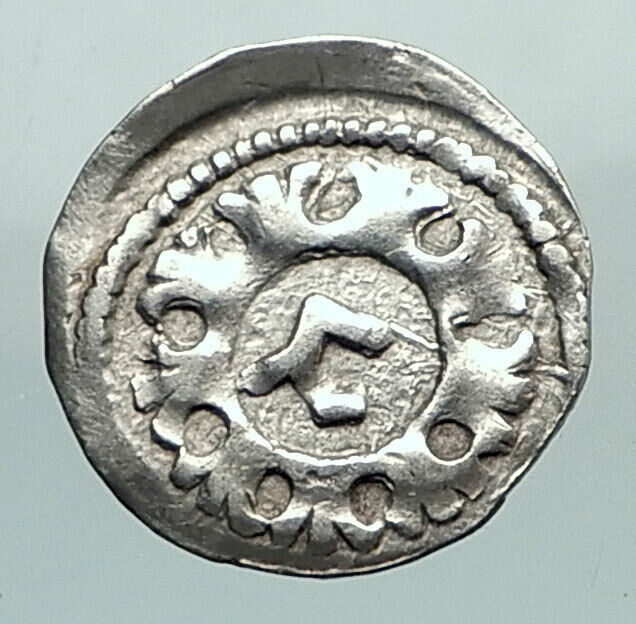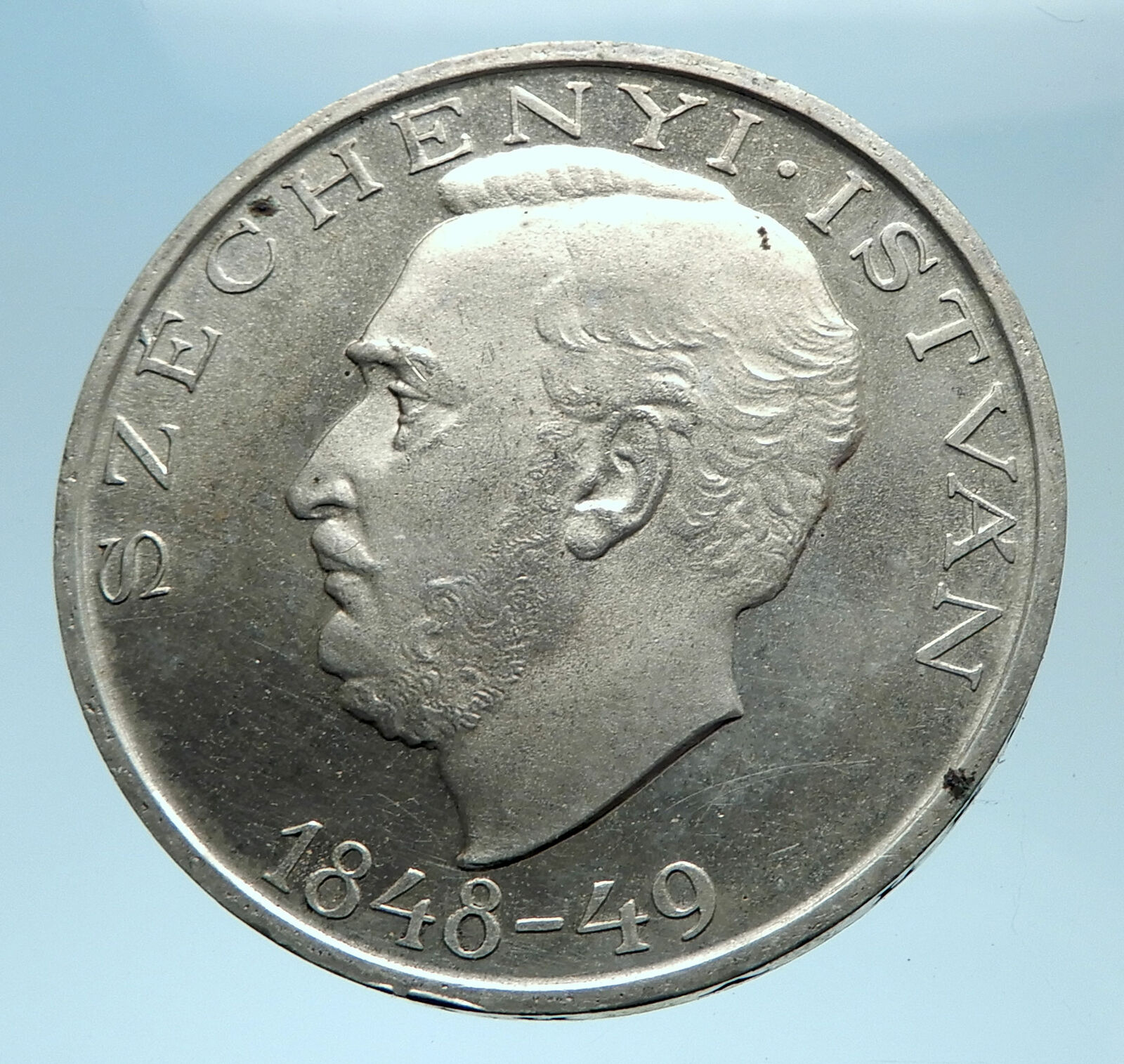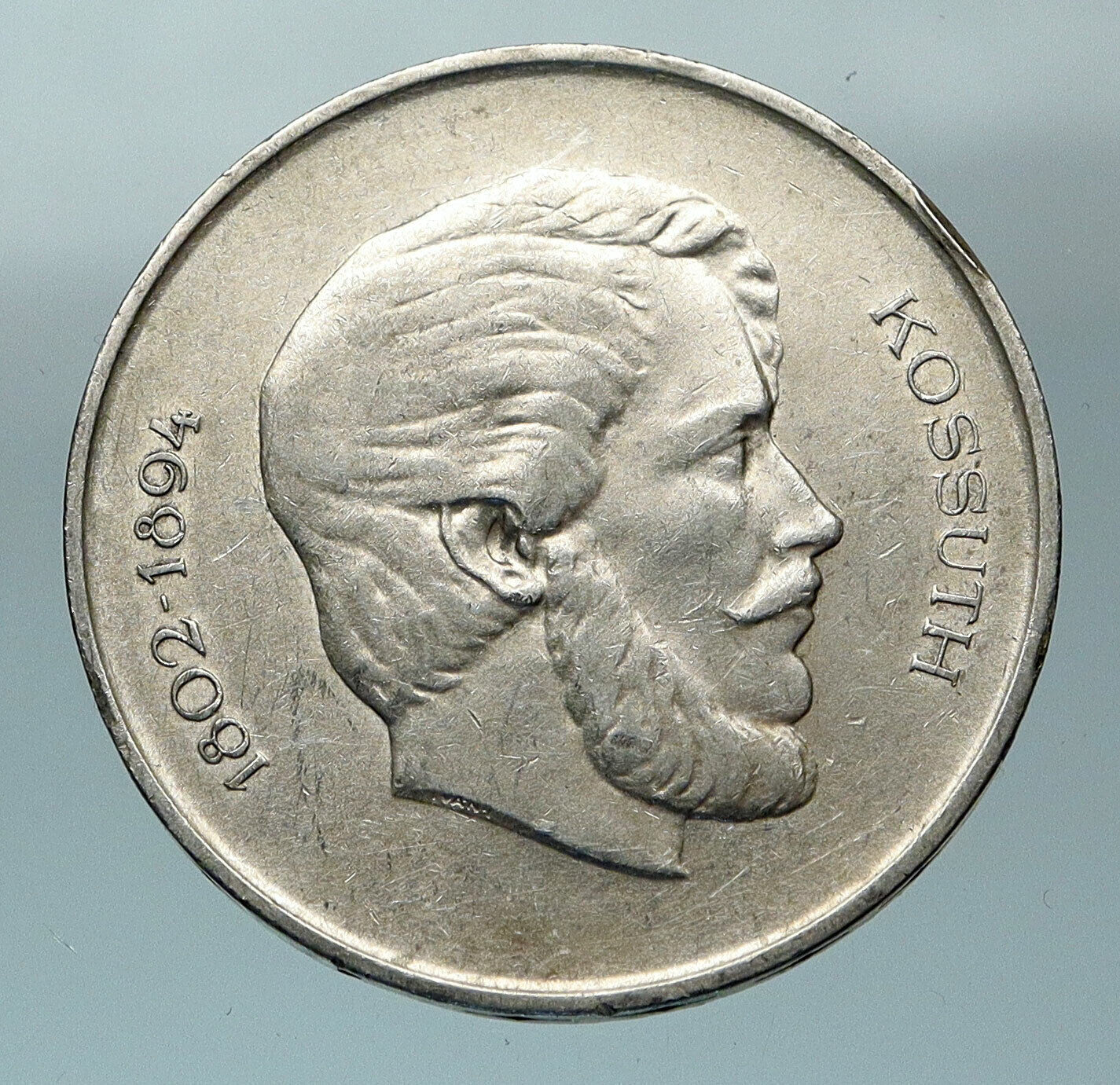|
Hungary
Francis I of Lorraine – Holy Roman Emperor: 13 September 1745 – 18 August 1765
1759 Silver 20 Krajczar 28mm (6.38 grams) 0.583 Silver (0.1252 oz. ASW)
Reference: KM# 2028 (1754-65)
FRANC·D·G·R·IMP·S·A·GE·IER·REX·LO·B·M·H·D·, Laureate head of Franz of Lothringen right within wreath.
IN TE DOMINE SPERAVI 17 X, Crowned double headed eagle on pedestal containing value, flanked by branches. On breast, arms of Lorraine and Tuscany with order of the Golden Fleece.
You are bidding on the exact item pictured, provided with a Certificate of Authenticity and Lifetime Guarantee of Authenticity.
 Francis I (Francis Stephen; French: François Étienne; German: Franz Stefan; 8 December 1708 – 18 August 1765) was the Duke of Lorraine and Bar (1729–1737), and later Grand Duke of Tuscany (1737–1765), who married Maria Theresa of Austria and became the last non-Habsburg Holy Roman Emperor (1745–1765) and Archduke of Austria (1740–1765). His wife effectively ruled Austria and the Holy Roman Empire. They were the founders of the Habsburg-Lorraine dynasty. The oldest surviving son of Leopold, Duke of Lorraine, Francis left the duchy for the deposed Polish king Stanisław Leszczyński in exchange for the Grand Duchy of Tuscany as one of the terms ending the War of the Polish Succession in 1738. The duchy and the ducal title to Lorraine and Bar passed to King Louis XV of France upon Leszczynski’s death in 1766, though Francis and his successors retained the right to style themselves as dukes of Lorraine and Bar. Francis I (Francis Stephen; French: François Étienne; German: Franz Stefan; 8 December 1708 – 18 August 1765) was the Duke of Lorraine and Bar (1729–1737), and later Grand Duke of Tuscany (1737–1765), who married Maria Theresa of Austria and became the last non-Habsburg Holy Roman Emperor (1745–1765) and Archduke of Austria (1740–1765). His wife effectively ruled Austria and the Holy Roman Empire. They were the founders of the Habsburg-Lorraine dynasty. The oldest surviving son of Leopold, Duke of Lorraine, Francis left the duchy for the deposed Polish king Stanisław Leszczyński in exchange for the Grand Duchy of Tuscany as one of the terms ending the War of the Polish Succession in 1738. The duchy and the ducal title to Lorraine and Bar passed to King Louis XV of France upon Leszczynski’s death in 1766, though Francis and his successors retained the right to style themselves as dukes of Lorraine and Bar.
In the Treaty of Füssen, Maria Theresa secured his election as Emperor, which took place on 13 September 1745. He succeeded Charles VII, and she made him co-regent of her hereditary dominions.
Francis was well content to leave the wielding of power to his able wife. He had a natural fund of good sense and brilliant business capacity and was a useful assistant to Maria Theresa in the laborious task of governing the complicated Austrian dominions, but he was not active in politics or diplomacy. However, his wife left him in charge of the financial affairs, which he managed well until his death. Heavily indebted and on the verge of bankruptcy at the end of the Seven Years’ War, the Austrian Empire was in a better financial condition than France or England in the 1780s. He also took a great interest in the natural sciences.
Francis was a serial adulterer, many of his affairs well-known and indiscreet, notably one with Princess Maria Wilhelmina of Auersperg, who was thirty years his junior. This particular affair was remarked upon in the letters and journals of visitors to the court and in those of his children.
He died suddenly in his carriage while returning from the opera at Innsbruck on 18 August 1765. He is buried in tomb number 55 in the Imperial Crypt in Vienna.
Maria Theresa and Francis I had sixteen children, amongst them the last pre-revolutionary queen consort of France, their youngest daughter, Marie Antoinette (1755–1793). Francis was succeeded as Emperor by his eldest son, Joseph II, and as Grand Duke of Tuscany by his younger son, Peter Leopold (later Emperor Leopold II). Maria Theresa retained the government of her dominions until her own death in 1780.
  Hungary is a sovereign state in Europe. It is situated in the Carpathian Basin and is bordered by Slovakia to the north, Romania to the east, Serbia to the south, Croatia to the southwest, Slovenia to the west, Austria to the northwest, and Ukraine to the northeast. The country’s capital and largest city is Budapest. Hungary is a member of the European Union, NATO, the OECD, the Visegrád Group, and the Schengen Area. The official language is Hungarian, which is the most widely spoken non-Indo-European language in Europe. Hungary is a sovereign state in Europe. It is situated in the Carpathian Basin and is bordered by Slovakia to the north, Romania to the east, Serbia to the south, Croatia to the southwest, Slovenia to the west, Austria to the northwest, and Ukraine to the northeast. The country’s capital and largest city is Budapest. Hungary is a member of the European Union, NATO, the OECD, the Visegrád Group, and the Schengen Area. The official language is Hungarian, which is the most widely spoken non-Indo-European language in Europe.
 Following centuries of successive habitation by Celts, Romans, Huns, Slavs, Gepids, and Avars, the foundation of Hungary was laid in the late 9th century by the Hungarian grand prince Árpád in the Honfoglalás (“homeland-conquest”). His great-grandson Stephen I ascended to the throne in 1000 CE, converting the country to a Christian kingdom. By the 12th century, Hungary became a middle power within the Western world, reaching a golden age by the 15th century. Following the Battle of Mohács in 1526 and about 150 years of partial Ottoman occupation (1541-1699), Hungary came under Habsburg rule, and later formed a significant part of the Austro-Hungarian Empire (1867-1918). Following centuries of successive habitation by Celts, Romans, Huns, Slavs, Gepids, and Avars, the foundation of Hungary was laid in the late 9th century by the Hungarian grand prince Árpád in the Honfoglalás (“homeland-conquest”). His great-grandson Stephen I ascended to the throne in 1000 CE, converting the country to a Christian kingdom. By the 12th century, Hungary became a middle power within the Western world, reaching a golden age by the 15th century. Following the Battle of Mohács in 1526 and about 150 years of partial Ottoman occupation (1541-1699), Hungary came under Habsburg rule, and later formed a significant part of the Austro-Hungarian Empire (1867-1918).
Hungary’s current borders were first established by the Treaty of Trianon (1920) after World War I, when the country lost 71% of its territory, 58% of its population, and 32% of ethnic Hungarians. Following the interwar period, Hungary joined the Axis Powers in World War II, suffering significant damage and casualties. Hungary came under the influence of the Soviet Union, which contributed to the establishment of a four-decade-long communist dictatorship (1947-1989). The country gained widespread international attention regarding the Revolution of 1956 and the seminal opening of its previously-restricted border with Austria in 1989, which accelerated the collapse of the Eastern Bloc.
On 23 October 1989, Hungary again became a democratic parliamentary republic, and today has a high-income economy with a very high Human Development Index. Hungary is a popular tourist destination attracting 10.675 million tourists a year (2013). It is home to the largest thermal water cave system and the second-largest thermal lake in the world (Lake Hévíz), the largest lake in Central Europe (Lake Balaton), and the largest natural grasslands in Europe (the Hortobágy National Park).
|





 Francis I (Francis Stephen; French: François Étienne; German: Franz Stefan; 8 December 1708 – 18 August 1765) was the Duke of Lorraine and Bar (1729–1737), and later Grand Duke of Tuscany (1737–1765), who married Maria Theresa of Austria and became the last non-Habsburg Holy Roman Emperor (1745–1765) and Archduke of Austria (1740–1765). His wife effectively ruled Austria and the Holy Roman Empire. They were the founders of the Habsburg-Lorraine dynasty. The oldest surviving son of Leopold, Duke of Lorraine, Francis left the duchy for the deposed Polish king Stanisław Leszczyński in exchange for the Grand Duchy of Tuscany as one of the terms ending the War of the Polish Succession in 1738. The duchy and the ducal title to Lorraine and Bar passed to King Louis XV of France upon Leszczynski’s death in 1766, though Francis and his successors retained the right to style themselves as dukes of Lorraine and Bar.
Francis I (Francis Stephen; French: François Étienne; German: Franz Stefan; 8 December 1708 – 18 August 1765) was the Duke of Lorraine and Bar (1729–1737), and later Grand Duke of Tuscany (1737–1765), who married Maria Theresa of Austria and became the last non-Habsburg Holy Roman Emperor (1745–1765) and Archduke of Austria (1740–1765). His wife effectively ruled Austria and the Holy Roman Empire. They were the founders of the Habsburg-Lorraine dynasty. The oldest surviving son of Leopold, Duke of Lorraine, Francis left the duchy for the deposed Polish king Stanisław Leszczyński in exchange for the Grand Duchy of Tuscany as one of the terms ending the War of the Polish Succession in 1738. The duchy and the ducal title to Lorraine and Bar passed to King Louis XV of France upon Leszczynski’s death in 1766, though Francis and his successors retained the right to style themselves as dukes of Lorraine and Bar.
 Hungary is a sovereign state in Europe. It is situated in the Carpathian Basin and is bordered by Slovakia to the north, Romania to the east, Serbia to the south, Croatia to the southwest, Slovenia to the west, Austria to the northwest, and Ukraine to the northeast. The country’s capital and largest city is Budapest. Hungary is a member of the European Union, NATO, the OECD, the Visegrád Group, and the Schengen Area. The official language is Hungarian, which is the most widely spoken non-Indo-European language in Europe.
Hungary is a sovereign state in Europe. It is situated in the Carpathian Basin and is bordered by Slovakia to the north, Romania to the east, Serbia to the south, Croatia to the southwest, Slovenia to the west, Austria to the northwest, and Ukraine to the northeast. The country’s capital and largest city is Budapest. Hungary is a member of the European Union, NATO, the OECD, the Visegrád Group, and the Schengen Area. The official language is Hungarian, which is the most widely spoken non-Indo-European language in Europe. Following centuries of successive habitation by Celts, Romans, Huns, Slavs, Gepids, and Avars, the foundation of Hungary was laid in the late 9th century by the Hungarian grand prince Árpád in the Honfoglalás (“homeland-conquest”). His great-grandson Stephen I ascended to the throne in 1000 CE, converting the country to a Christian kingdom. By the 12th century, Hungary became a middle power within the Western world, reaching a golden age by the 15th century. Following the Battle of Mohács in 1526 and about 150 years of partial Ottoman occupation (1541-1699), Hungary came under Habsburg rule, and later formed a significant part of the Austro-Hungarian Empire (1867-1918).
Following centuries of successive habitation by Celts, Romans, Huns, Slavs, Gepids, and Avars, the foundation of Hungary was laid in the late 9th century by the Hungarian grand prince Árpád in the Honfoglalás (“homeland-conquest”). His great-grandson Stephen I ascended to the throne in 1000 CE, converting the country to a Christian kingdom. By the 12th century, Hungary became a middle power within the Western world, reaching a golden age by the 15th century. Following the Battle of Mohács in 1526 and about 150 years of partial Ottoman occupation (1541-1699), Hungary came under Habsburg rule, and later formed a significant part of the Austro-Hungarian Empire (1867-1918).




